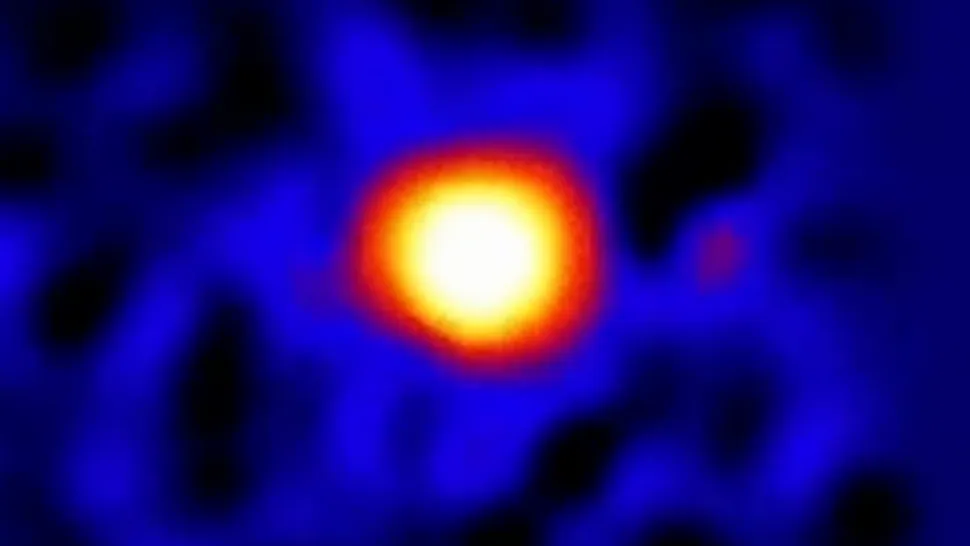For decades, Sagittarius A* (Sgr A*), the supermassive black hole at the heart of the Milky Way, has been a source of mystery for astronomers. While black holes are often thought of as silent cosmic voids, recent observations from NASA’s James Webb Space Telescope (JWST) have painted a very different picture—one of constant activity, flares, and bursts of energy.
The Flickering Heart of the Milky Way
While scientists expected occasional flares from Sgr A*, the JWST observations revealed that our galaxy’s central black hole is constantly bubbling with activity. Astronomers observed that the flares occur on multiple timescales:
- Some are faint flickers lasting seconds.
- Brighter, high-energy flares occur daily.
- Some weaker flares can persist for months.

According to Farhad Yusef-Zadeh, a researcher at Northwestern University and lead scientist of the study, “Our black hole is unique. It is always bubbling with activity and never seems to reach a steady state.”
Cosmic Fireworks with No Clear Pattern
Unlike the structured flares seen in some other supermassive black holes, the bursts from Sgr A* appear to be random. The team analyzed data from multiple 8-to-10-hour observation periods across 2023 and 2024 and found that no two sessions looked alike. Every time JWST captured new data, the black hole showed a different activity profile, further deepening the mystery.
The Accretion Disk: A Violent Whirlpool of Energy
At the core of these cosmic flares is the accretion disk, a spinning cloud of gas and dust that orbits Sgr A*. As material spirals inward, it heats up due to friction and magnetic forces, sometimes reaching millions of degrees. When too much energy builds up, the material is released in sudden bursts—creating the flares observed by JWST.
Magnetic Reconnection: Like Solar Flares, But Supercharged
One leading theory suggests that these flares result from magnetic reconnection, a process seen in our Sun’s solar flares. When tangled magnetic field lines snap and realign, they release massive amounts of energy and accelerate particles to near-light speeds. The result? A bright, high-energy flare that temporarily illuminates the black hole’s surroundings.
According to Yusef-Zadeh, “It’s similar to how the sun’s magnetic field gathers together, compresses, and then erupts a solar flare. But near a black hole, these processes are much more extreme.”
Understanding Black Hole Evolution
By studying the flares from Sgr A*, astronomers can better understand how supermassive black holes grow and evolve. The energy released in these bursts can:
- Regulate star formation by heating surrounding gas, preventing new stars from forming.
- Influence galactic structure, shaping the Milky Way’s central bulge.
- Provide insight into high-energy physics, offering a glimpse into the universe’s most extreme environments.
Unraveling the Secrets of Accretion Disks
While scientists have studied accretion disks around other black holes, Sgr A* offers a unique opportunity. Since it is relatively close (26,000 light-years away), astronomers can observe details that are impossible to detect in more distant galaxies. This helps refine our understanding of:
- How black holes consume matter.
- What determines flare strength and duration.
- The role of magnetic fields in shaping black hole activity.
Next Steps: A 24-Hour Observation Campaign
Given the unpredictable nature of Sgr A*’s flares, Yusef-Zadeh and his team have proposed an uninterrupted 24-hour observation session with JWST. This extended timeframe will allow scientists to:
- Reduce observational noise and capture fainter flares.
- Identify potential periodicity in flare activity.
- Analyze how flares evolve over time.
Other Observatories Join the Effort
In addition to JWST, astronomers are planning to use:
- The Event Horizon Telescope (EHT) to capture direct images of flare activity.
- The Chandra X-ray Observatory to study the X-ray emission from flares.
- The Atacama Large Millimeter/submillimeter Array (ALMA) to observe how these flares impact surrounding gas clouds.
The Broader Impact on Astronomy
Understanding the flaring behavior of Sgr A* has far-reaching implications. This research not only advances our knowledge of black hole physics but also helps us understand:
- How black holes influence their host galaxies over cosmic timescales.
- Whether similar flare activity occurs in other supermassive black holes.
- How magnetic fields behave in extreme gravitational environments.
Conclusion: A Milestone in Black Hole Research
The discovery of Sgr A*’s constant flaring activity represents a breakthrough in astrophysics. Far from being a dormant giant, our galaxy’s central black hole is a dynamic, ever-changing cosmic powerhouse. These new observations from JWST challenge previous assumptions about black hole behavior and open the door to further groundbreaking research.
Reference:
F. Yusef-Zadeh et al, Non-stop variability of Sgr A* using JWST at 2.1 and 4.8 micron wavelengths: Evidence for distinct populations of faint and bright variable emission, The Astrophysical Journal Letters (2025). On arXiv (2025). DOI: 10.48550/arxiv.2501.04096



















